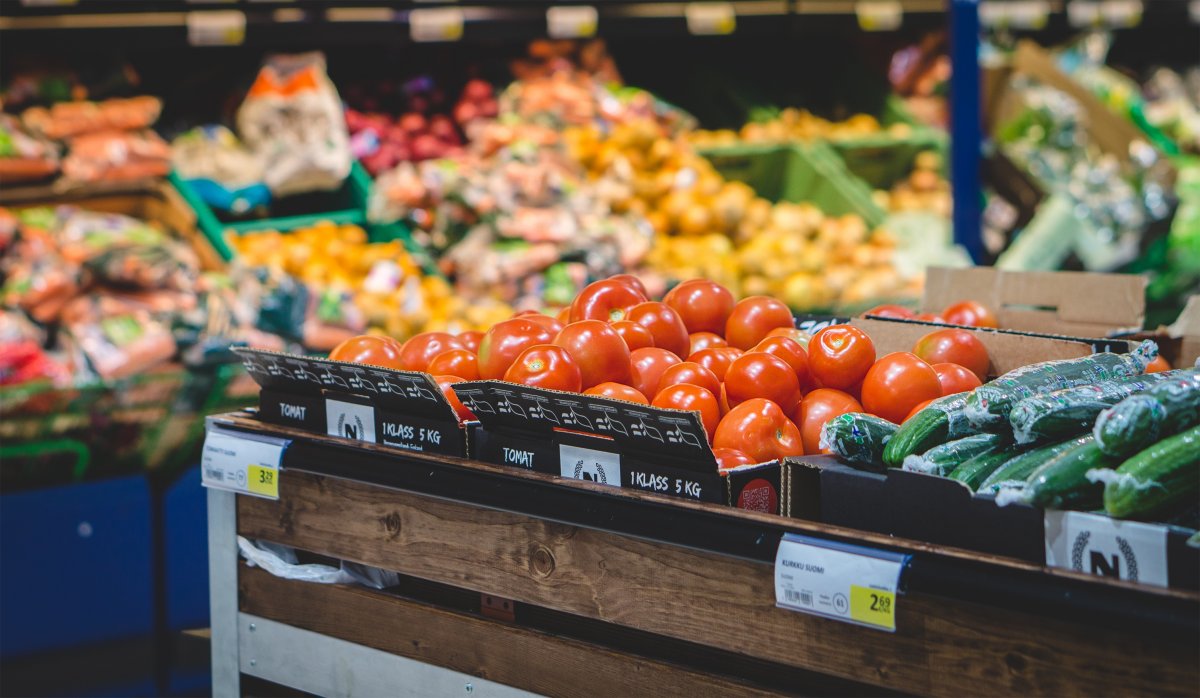Some people just see trash in grocery store trash cans. But others see it as a business. Until now, most waste has been dumped in landfills, where the greenhouse gas methane is released into the atmosphere as it decomposes. But now more and more biogas plants are being built in the USA, in which microbes break down food waste into methane and carbon dioxide and the cleaned biogas becomes an energy source.
In early March, Divert announced a $1 billion financing agreement with energy infrastructure company Enbridge. The aim is to further expand the use of this technology. If all goes according to plan, Divert could handle 5 percent of all food waste in the US by the end of the decade, says CEO and co-founder Ryan Begin.
According to the US Department of Agriculture, around 60 million tons of food waste are generated each year in the US alone. This corresponds to about 30 percent of the entire food supply. Almost a billion tons of food waste are generated worldwide every year. While many landfills have systems in place to capture the gases produced, they can often only handle 60 percent of the methane emitted, according to the US Environmental Protection Agency.
“We have to deal with this waste somehow,” says Meltem Urgun Demirtas, leader of the Bioprocesses and Reactive Separations group at Argonne National Laboratory. Proper processing of food waste does not help avoid methane emissions, but can even generate energy and products such as fertilizer.
Bacteria for methane production
One of these possibilities is anaerobic fermentation by bacteria, which is already being used in sewage treatment plants all over the world. Increasingly, however, it is also being used for other types of waste, for example liquid manure processing in agricultural operations or for discarded food. Germany is the world leader in anaerobic digestion plants: Today it operates around 10,000 such reactors. There are just over 2,000 in the US, and only a few hundred make use of food waste.
Here’s how the technology works: when companies receive food waste from grocery stores or retailers, they liquify it and turn it into a “waste mush,” Divert CEO Begin calls it. Non-organic debris such as rubber bands, stickers and plastic wrap are removed, and the pulp is then passed through the rest of the process. The star of it all is the community of microbes in the reactor, which function much like a sourdough starter. They gobble up the food waste and turn the watery mix into the end products: biogas and solid digestate that can be dumped into the soil.
“We’re actually microbial growers,” says Shawn Kreloff, managing director of Bioenergy DevCo, which also builds and operates anaerobic digestion plants. To keep the microbes happy, the facilities need to provide just the right conditions. This means a narrow temperature and acidity range. “Also, they don’t like it when their food is too salty,” says Christine McKiernan, chief engineering and construction officer at Bioenergy DevCo.
Another way of decomposition: composting
Composting is perhaps a better known practice for dealing with food waste. Microbes also produce a solid, nutrient-rich material. The big difference, however, is that the composting takes place in the presence of oxygen, i.e. aerobically, so the microbes break down the waste into soil, releasing mainly carbon dioxide.
However, if a compost heap is not sufficiently mixed, the microbes are deprived of oxygen. The compost then naturally becomes anaerobic, i.e. devoid of oxygen, and methane is produced. This is then bad news for composting facilities and the planet because the facilities are often open. Over short periods of time, methane as a greenhouse gas is about eighty times more harmful than carbon dioxide.
How the methane produced is used
In anaerobic digestion, however, the goal is to produce methane. Because these plants are sealed, the mixture of methane and carbon dioxide produced by microbes, known as biogas, can be captured and cleaned into biomethane and used as a substitute for natural gas.
Some producers take this biomethane, also called renewable natural gas, or the raw biogas on-site and burn it to power their facilities. Others sell it to utility companies so that it can be injected into existing natural gas pipelines and used to generate electricity in power plants or for home heating and cooking.
Broadly speaking, anaerobic digestion could have climate benefits, but how much the process reduces emissions depends heavily on the details, says Troy Hawkins of Argonne National Laboratory, who studies the environmental impacts of energy systems.
Divert works with over 5,000 retail stores across the US to collect and process food waste through anaerobic digestion. The company currently operates 10 fermenter sites across the US and uses tracking systems to try to understand why certain foods are wasted in the first place, Begin adds.
Fermenter systems in planning
Deploying anaerobic digesters doesn’t come cheap: a full-scale facility can cost tens or hundreds of millions of dollars. Planning new plants also takes a lot of time as most are custom made for specific processing tasks. A facility for an ice cream factory can look different than one that can accommodate everything from grocery store waste, like expired frozen pizzas and stale apples, to used cooking oils from restaurants, says McKiernan of Bioenergy DevCo.
According to a 2014 US federal agency report, over 11,000 other US sites are ripe for the use of anaerobic digesters, from wastewater facilities to food waste sites. If all of these plants were built, they could generate enough energy to power three million homes. The industry association American Biogas Council estimates the number of plants at 15,000, which would cost a total of around $45 billion to build.
It won’t be cheap and it won’t be fast, but anaerobic digesters could be a major food waste target in the future, helping to turn one’s table scraps into the energy of another.

(vs.)
